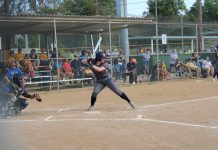“There’s going to be more scouts, more fans, and the league would be using the same metrics and analytics these kids are going to be scouted and eventually drafted on,” John Jakiemiec, the owner and manager of the DuPage Prospect League team, The Pistol Shrimp, said.
The Professional Baseball Agreement between Major League Baseball (MLB) and Minor League Baseball (MiLB) expired on Sept. 30 of this year. With that expiration, MLB set forward on enacting a deal that would restructure the minors as part of their “One Baseball” vision.
MLB aims to do two things: cut costs and universalize assessment methods. Lowering the number of affiliates a Major League ball club can have will inherently cut costs, which should, in turn, help to raise Minor League players’ salaries. The league also wants to implement the same player development measurements across all levels of baseball in order to more accurately assess players.
Negotiations between MLB and MiLB have been lengthy and convoluted, leaving baseball fans with more questions than answers. J.J. Cooper, the executive editor of Baseball America, has been at the forefront covering the latest news surrounding the MiLB redistribution since 2018. While not much is currently known, Cooper was able to give some insight as to what the future of the minors could potentially look like.
“The negotiations right now are figuring out the details and the economic structure of how this is going to work,” Cooper said. “One of the few things we do know for certain is the number of teams.”
The number of affiliated teams will be reduced from 160 to 120. Each MLB team will be allowed one Triple-A team, one Double-A team, one high Class-A team and one low Class-A team. As part of these cuts, MiLB will no longer feature short-season leagues as a part of affiliated baseball.
To fill the void left by the departure of short-season baseball, MLB has announced partnerships with new Partner Leagues. MLB has confirmed that the Atlantic League, the American Association and the Frontier League will become official MLB partners.
“Looking beyond just the business side of these partnerships, these independent summer leagues can act as developmental feeder leagues for guys who aren’t quite ready for affiliated ball but are still worth evaluating,” Cooper said.
This partnership should also allow the newly added leagues to regularly meet with MLB to discuss joint-business and promotional opportunities.
MLB has also shown interest in extending their “One Baseball” vision to amateur summer wood-bat leagues as well. In a partnership with USA Baseball, MLB has announced that the Appalachian League will become an amateur wood-bat league.
Another league rumored to be in talks with MLB is the U.S. Prospect League. John Jakiemiec, the owner and manager of the DuPage Prospect League team, The Pistol Shrimp, sees the partnership as a way to showcase college baseball players like never before.
“If the Prospect League has an affiliation with Major League Baseball, meaning we’ll be using the same metrics and tools being used in the Minor Leagues, a college coach is going to want his kids to go play in the Prospect League,” Jakiemiec said. “There’s going to be more scouts, more fans, and the league would be using the same metrics and analytics these kids are going to be scouted and eventually drafted on.”
Even with the shortening of the MLB Amateur Draft from 40 rounds to five, the restructuring of the Minor Leagues could prove to be beneficial to college baseball players who are looking to take that next step.
“Most of the changes probably won’t have much of an effect at the college level, but the streamlining of this system is absolutely going to help the guys who have the chance to go and play affiliated ball,” Jakiemiec said. “Having access to HitTrax and Rapsodo and having that close connection to MLB is really going to give guys a developmental boost.”



